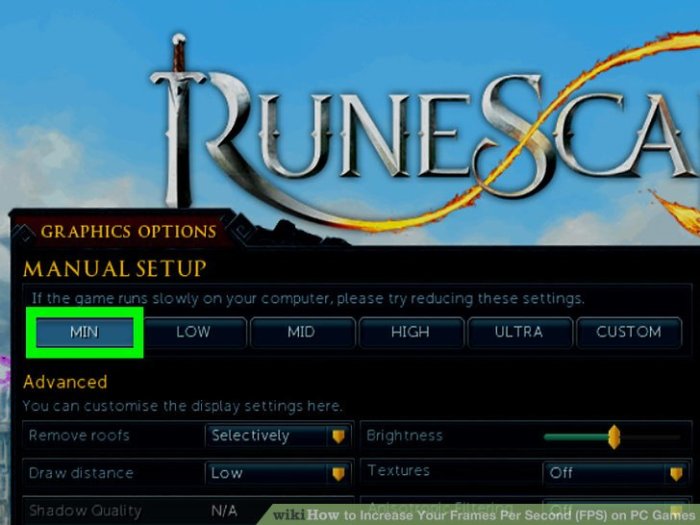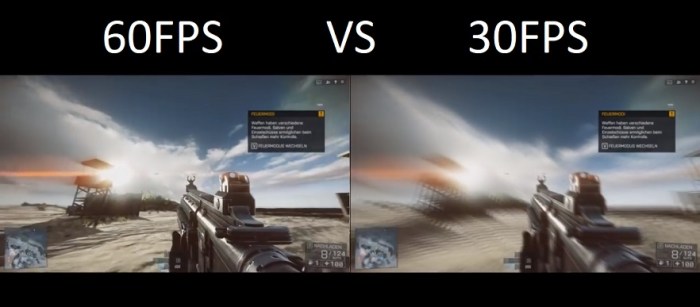Best settings high FPS gaming low end PC build: Unlocking smooth, high-frame-rate gaming on a budget isn’t a myth. This guide dives deep into maximizing performance on lower-end PCs, showing you how to tweak settings, optimize software, and strategically upgrade to conquer lag and enjoy a vastly improved gaming experience.
We’ll explore the best settings for various games, identify common bottlenecks, and even reveal cost-effective hardware upgrades that deliver significant FPS boosts. Prepare to transform your low-end PC into a surprisingly capable gaming machine.
This isn’t about settling for subpar performance; it’s about strategic optimization. We’ll cover everything from understanding the limitations of low-end components to mastering in-game settings and Windows tweaks. You’ll learn to identify performance bottlenecks, choose the right hardware upgrades when needed, and ultimately, get the most out of your existing system.
This comprehensive guide will empower you to conquer lag and enjoy a smoother, more responsive gaming experience, regardless of your budget.
Defining “Low-End PC” for High FPS Gaming

Building a high-FPS gaming PC on a budget requires a strategic approach. Understanding what constitutes “low-end” in 2024 is crucial for maximizing performance within your financial constraints. This isn’t about compromising on the gaming experience; it’s about optimizing your build for specific titles and understanding the trade-offs involved.
Low-End PC Component Specifications for 2024
Defining a “low-end” PC for high FPS gaming in 2024 necessitates considering price points and performance capabilities relative to current market offerings. We’ll focus on components that deliver acceptable frame rates in esports titles and less demanding AAA games at lower settings.
Remember, “low-end” is relative; advancements in technology constantly redefine these boundaries.
CPU Specifications for Low-End High-FPS Gaming
For a low-end high-FPS build in 2024, you’ll likely be looking at CPUs priced between $75 and $150. These processors will prioritize sufficient clock speed and core count for smooth gameplay in less demanding titles. Examples include older generation Intel Core i3 processors or AMD Ryzen 3 processors.
While not top-of-the-line, these offer adequate performance for the targeted games. Overclocking may be possible, further enhancing performance, but always monitor temperatures.
GPU Specifications for Low-End High-FPS Gaming
The GPU is the most critical component for achieving high FPS. For a low-end build, budget-friendly GPUs in the $100-$200 range will be your focus. These cards may be older models or entry-level offerings from major manufacturers like Nvidia and AMD.
Expect to run games at lower settings, but you should still achieve playable frame rates in esports titles. Examples include entry-level models from the previous generation of Nvidia GeForce GTX or AMD Radeon RX series.
Performance Comparison of Low-End CPU/GPU Combinations, Best settings high FPS gaming low end PC build
The following table provides a comparative analysis of various low-end CPU and GPU combinations, estimating FPS in popular esports titles. These figures are estimates based on average performance benchmarks and may vary based on specific game settings, driver versions, and individual system configurations.
Remember, these are projections and your actual results may differ.
| Component | Model | Price Range (USD) | Estimated FPS (CS:GO, Valorant, Overwatch 2) |
|---|---|---|---|
| CPU | Intel Core i3-10100 | $75-$100 | 100+, 120+, 80+ (Low-Medium Settings) |
| GPU | Nvidia GeForce GTX 1650 | $100-$150 | 100+, 100+, 70+ (Low-Medium Settings) |
| CPU | AMD Ryzen 3 3100 | $80-$120 | 90+, 110+, 75+ (Low-Medium Settings) |
| GPU | AMD Radeon RX 6400 | $120-$180 | 90+, 90+, 65+ (Low-Medium Settings) |
Remember, these are estimates. Actual performance will vary depending on game settings, drivers, and individual system configurations.
Software Optimization for High FPS

Unlocking the true potential of your low-end gaming PC isn’t just about hardware; smart software optimization plays a crucial role in boosting those frames per second. By understanding and managing your system’s resources effectively, you can significantly improve your gaming experience without upgrading components.
This involves taming background processes, tweaking Windows settings, and utilizing resource monitoring tools to pinpoint and address performance bottlenecks.Background processes and services, often running silently in the background, consume valuable system resources like RAM and CPU power. These resources are then unavailable for your games, directly impacting performance.
Even seemingly insignificant processes, cumulatively, can create a noticeable drag on your gaming experience. For instance, a poorly optimized antivirus program or a streaming service running concurrently with your game can lead to stuttering and lower frame rates. Efficient management of these processes is paramount for maximizing your gaming performance.
Minimizing Background Processes and Services
Reducing the number of background processes is a straightforward way to free up system resources for your games. You can achieve this through Windows Task Manager. Open Task Manager (Ctrl+Shift+Esc), navigate to the “Processes” tab, and identify processes consuming significant CPU or memory.
Right-click on processes you don’t need (be cautious; don’t terminate critical system processes) and select “End task.” Regularly reviewing and closing unnecessary programs before launching a game is a good habit to develop. Consider disabling startup programs that aren’t essential.
In Windows, search for “Startup apps,” review the list, and disable any non-essential applications to prevent them from launching automatically with Windows. This proactive approach ensures your system boots faster and runs more efficiently, leaving more resources for your games.
Optimizing Windows Settings for Gaming
Windows offers several settings that can be adjusted to improve gaming performance. For instance, disabling visual effects can significantly boost FPS. Right-click on “This PC,” select “Properties,” then “Advanced system settings,” and click on “Settings” under “Performance.” Choose “Adjust for best performance” to disable most visual effects.
Alternatively, you can selectively disable specific effects, such as animations and shadows, for a more customized approach. Another important setting is the power plan. Switching to the “High Performance” power plan ensures your CPU and GPU run at their maximum potential, leading to higher frame rates.
Locate this in the Control Panel under “Power Options.” Finally, ensure your graphics drivers are up-to-date. Outdated drivers can lead to compatibility issues and reduced performance. Visit the website of your graphics card manufacturer (NVIDIA or AMD) to download and install the latest drivers.
Utilizing Resource Monitors to Identify Performance Bottlenecks
Resource monitors provide real-time insights into your system’s resource usage. Windows Task Manager offers a basic level of monitoring, but dedicated tools like MSI Afterburner or HWMonitor offer more detailed information. These tools display CPU and GPU usage, memory consumption, and other vital statistics.
By monitoring these metrics while gaming, you can identify which component is causing a bottleneck. For example, if your GPU usage is consistently at 100% while your CPU usage is low, then your GPU is the bottleneck. Conversely, if your CPU usage is high while your GPU usage is low, then your CPU is the bottleneck.
Identifying the bottleneck allows you to focus your optimization efforts on the specific component limiting your performance. This targeted approach ensures you’re making the most effective changes.
Closing Summary
Mastering high FPS gaming on a low-end PC is achievable with the right knowledge and strategy. By understanding your hardware limitations, optimizing in-game settings, and strategically upgrading when necessary, you can significantly improve your gaming experience without breaking the bank.
Remember, it’s about intelligent optimization, not just throwing money at the problem. This guide equips you with the tools and knowledge to transform your gaming experience, proving that high FPS gaming on a budget is entirely within reach. Start optimizing today and experience the difference!
FAQ Explained: Best Settings High FPS Gaming Low End PC Build
Can I play AAA games on a low-end PC?
Yes, but at lower settings. Focus on resolution, textures, and shadow quality for the biggest FPS gains.
What’s the most impactful single upgrade for FPS?
Generally, upgrading your GPU provides the most significant FPS increase, but RAM upgrades can also be beneficial if you’re experiencing memory bottlenecks.
How can I monitor my PC’s performance during gaming?
Use tools like MSI Afterburner or the Windows Task Manager to monitor CPU, GPU, and RAM usage in real-time. This helps identify bottlenecks.
What resolution should I use for best performance?
Lower resolutions like 720p or 900p will significantly boost FPS on low-end hardware. Consider using a lower aspect ratio if needed.
Leave a Reply